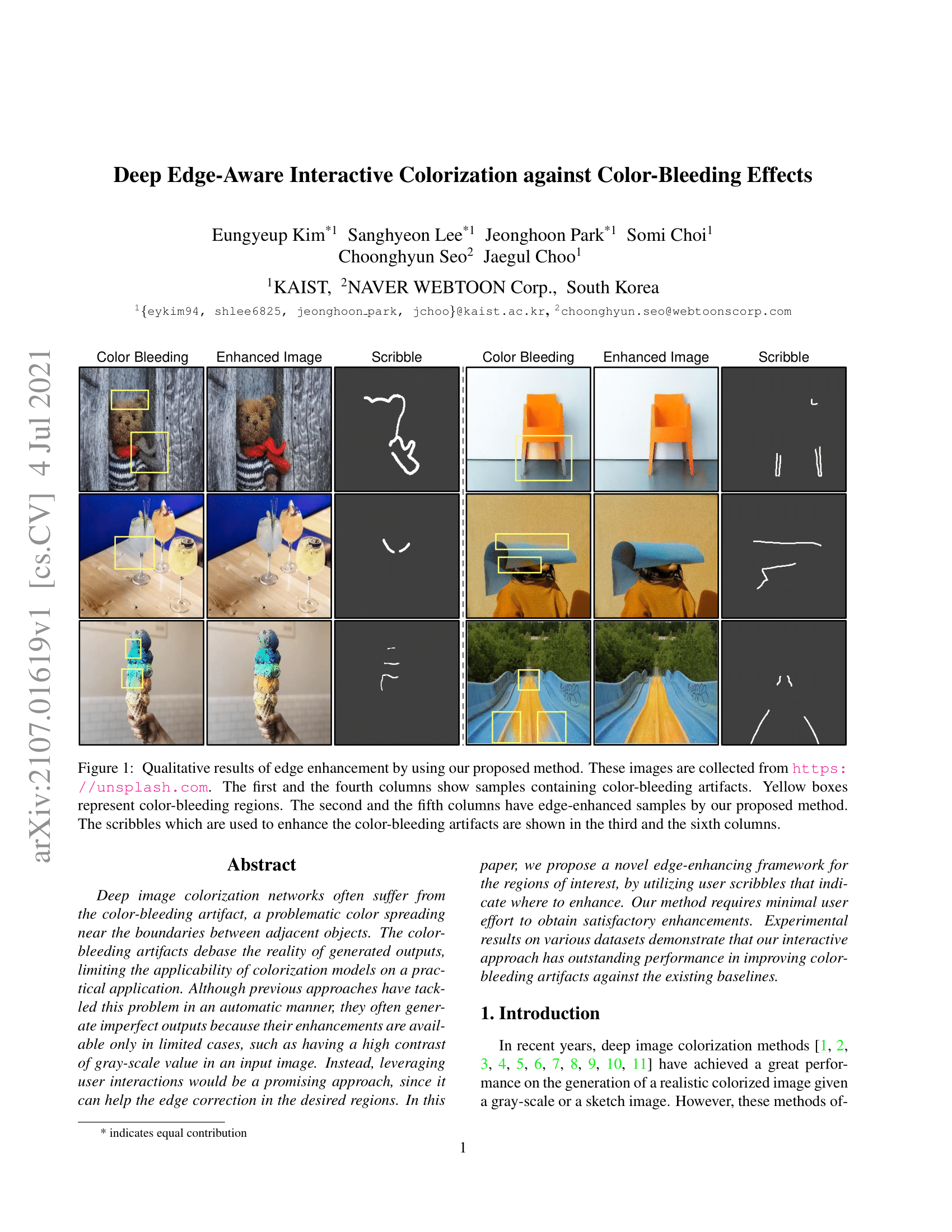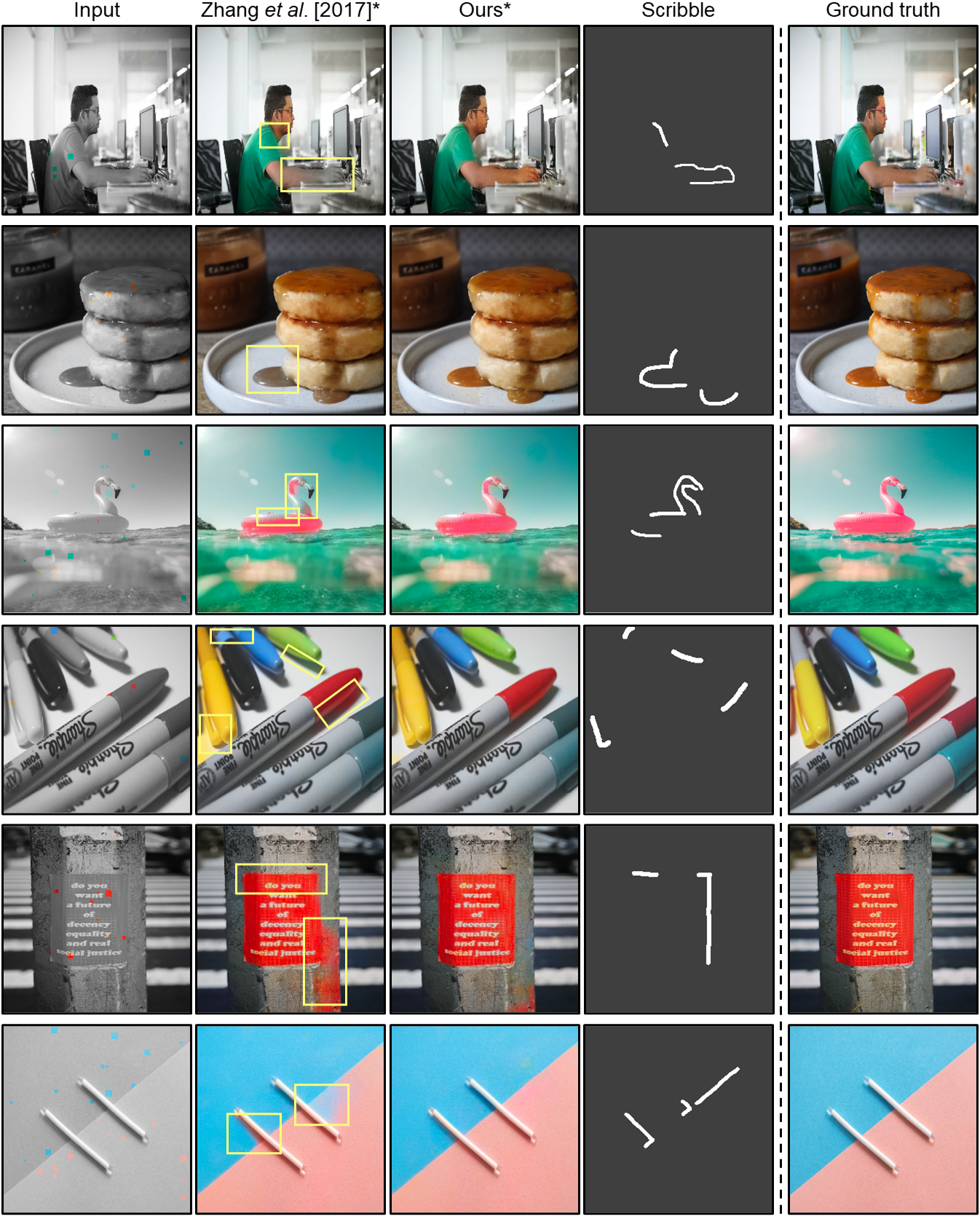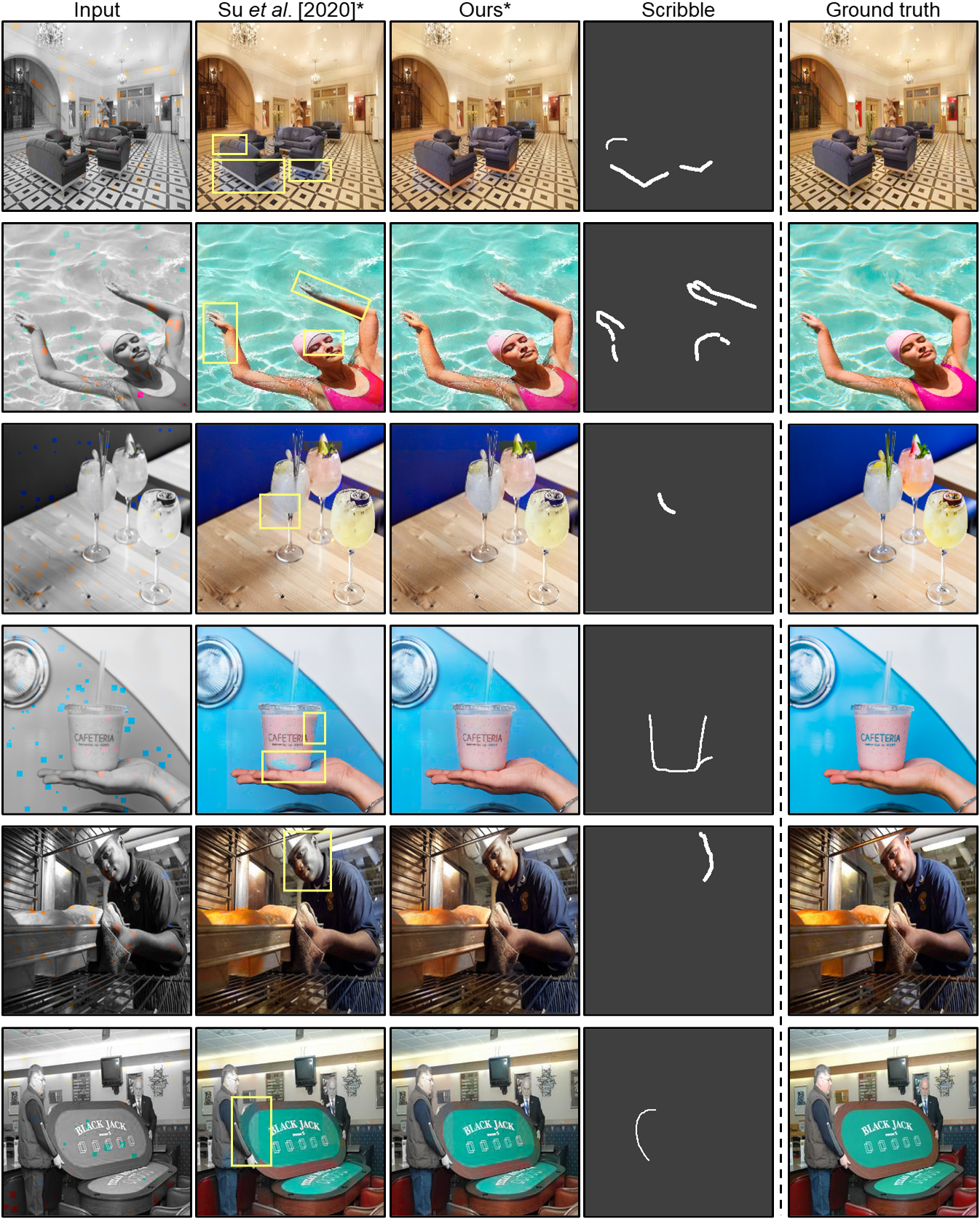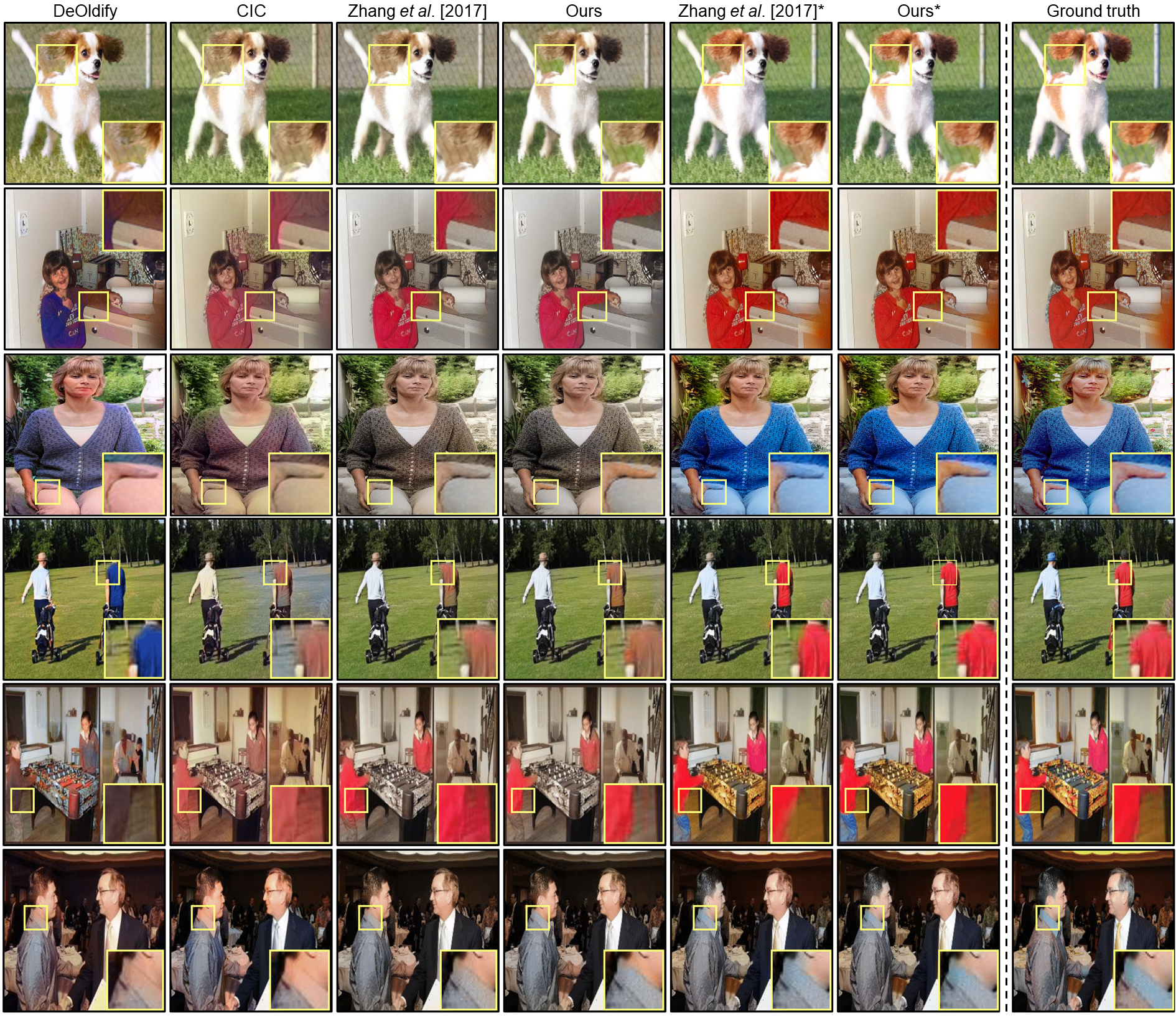Deep Edge-Aware Interactive Colorization
against Color Bleeding Effects
ICCV (Oral presentation)

Abstract
Deep image colorization networks often suffer from the color-bleeding artifact, a problematic color spreading near the boundaries between adjacent objects. The color-bleeding artifacts debase the reality of generated outputs, limiting the applicability of colorization models on a practical application. Although previous approaches have tackled this problem in an automatic manner, they often generate imperfect outputs because their enhancements are available only in limited cases, such as having a high contrast of gray-scale value in an input image. Instead, leveraging user interactions would be a promising approach, since it can help the edge correction in the desired regions. In this paper, we propose a novel edge-enhancing framework for the regions of interest, by utilizing user scribbles that indicate where to enhance. Our method requires minimal user effort to obtain satisfactory enhancements. Experimental results on various datasets demonstrate that our interactive approach has outstanding performance in improving color-bleeding artifacts against the existing baselines.
Paper

Eungyeup Kim, Sanghyeon Lee, Jeonghoon Park, Somi Choi, Choonghyun Seo, and Jaegul Choo. "Deep Edge-Aware Interactive Colorization against Color-Bleeding Effects"
Method overview

Additional Results


